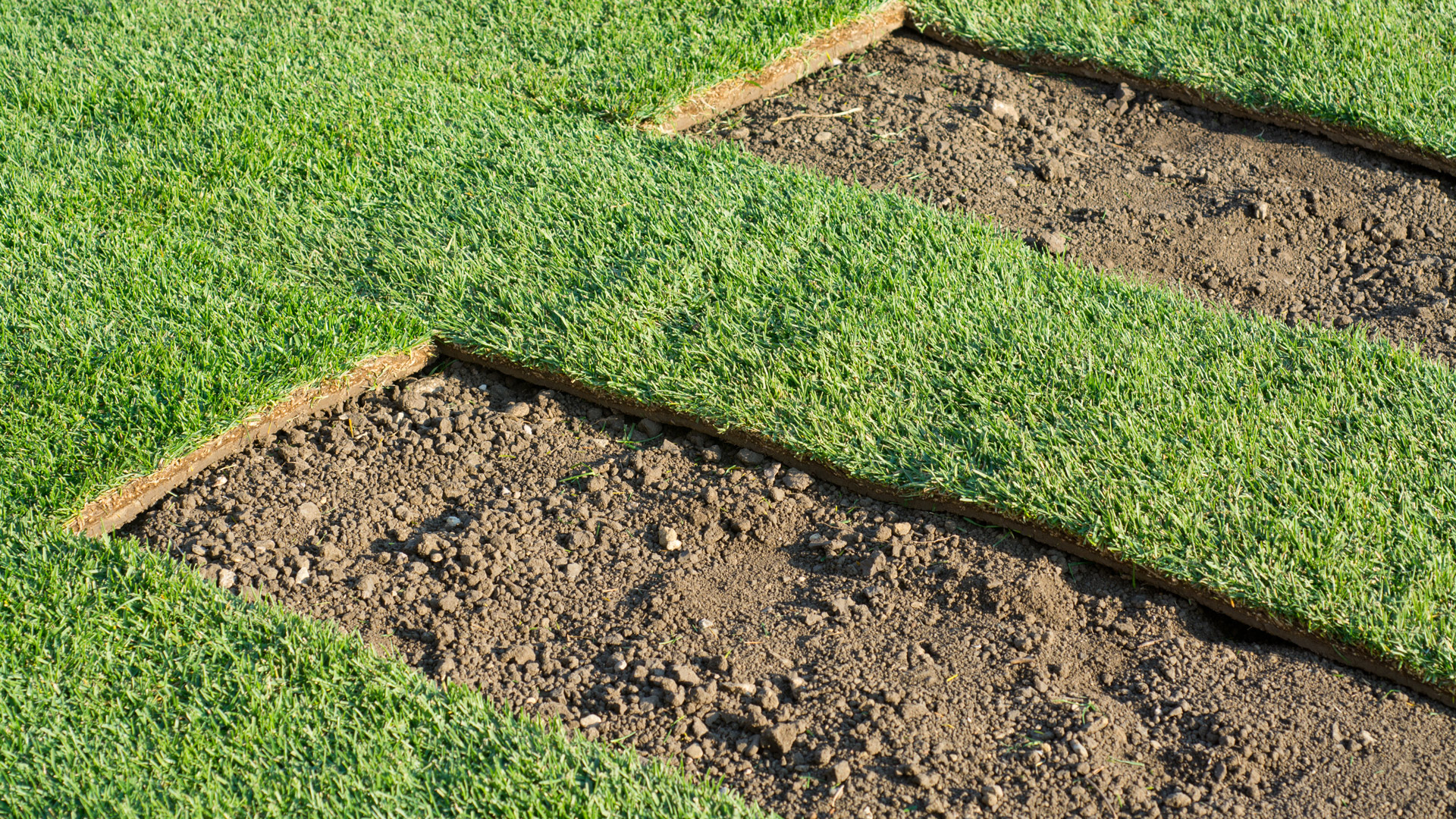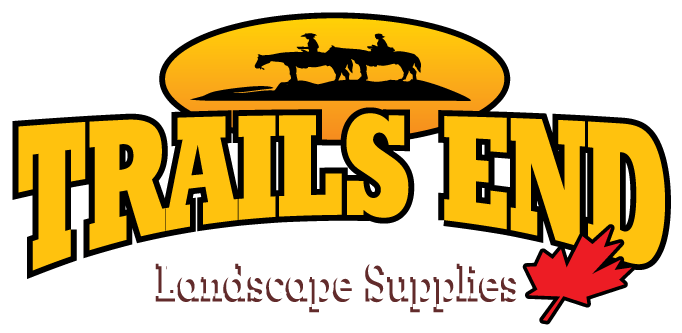The Trails End Guide to Lawn Seeding & Maintenance
Start (and keep) a healthy lawn!
Overview
Tips and tricks for creating good lawn conditions
- Assess your lawn, look for problem areas.
- Dethatch lawn, late summer, early fall or in spring when ground thaws every 3 years.
- Aerate after dethatching every year or two
- Repair low spots with Topsoil for grading
- Top-dress lawn every year or two in Spring or Fall with Gro-Turf
- Plant grass seed with a spreader
- Spread a little more Gro-Turf soil on top approx. ½ ” is ideal
- Use a lawn roller to ensure seed is planted into the soil and ground is levelled properly
- Water enough to keep seed moist but no saturated
Ask a Trails End employee if you have any questions about seeding or lawn maintenance!
For best results, apply in early to mid-spring or early fall
Assessing Your Lawn
Before you start tearing up your existing grass, you should first take a good look at the current state of your lawn and identify any potential issues
- Is your lawn level? Are there certain areas that puddle in the spring and when we get lots of rain? This is an issue because when you have soggy areas, you’re more likely to cause ruts and tear up the grass as well as they are a common breeding ground for insects. Grass doesn’t grow well in over saturated areas so it’s best to first fix the grade with our Topsoil for grading.
- Does your lawn need to be dethatched? When your “thatch layer” is too thick it starts to block water, air and nutrients from getting to the roots of your grass. This is where you can run into more grub and insect problems because they like to feed and nest there. Dethatching cleans out all of the dead grass and roots that accumulate on and below the soil surface.
- Have you aerated recently? Aeration is another great maintenance tool that should be done annually or bi-annually. This process punctures holes in the lawn which helps add porosity to compacted lawns. If you look at your lawn, you may notice the worse spots with weeds are the places that get the most foot traffic as they love compacted earth.

Choosing the Best Products for your Lawn
Grass Seed: When choosing your grass seed it is important to pick the best type for your yard. There are 3 main types of cool season grasses that grow in our climate: Rye, Fescue and Kentucky Bluegrass.
- Rye and Fescue blends tend to be hardier and can withstand more drought, foot traffic and are disease resistant
- Kentucky Bluegrass looks very nice though it can be difficult to maintain as it needs more sun, water & nutrients.
- It is good to have a mixture of difference seed types in a lawn so that if there happens to be a disease or type of insect that attacks your grass, it doesn’t wipe out the entire lawn
- If you happen to have a lot of shade then it is better to have a Fescue blend which is more shade tolerant
Fertilizer: We don’t typically recommend using chemical fertilizers because there are a lot of salts in fertilizer that will overtime destroy your soil health and the microbes that live in your soil. Instead, feed your lawn via topdressing as well as the use of organic fertilizers such as our Earth’s Honey.
Soil:
- If you are just topdressing, use the Gro-Turf. This lightweight soil is mostly organic material and does a great job of holding moisture!
- If you are leveling and seeding, use the 50/50 Garden Blend or our TE Golf Mix. It’s heavy enough to fill in holes but has enough nutrients to feed the seed!
Top-dressing
Top-dressing is putting seed down with a layer of soil with a high percentage of organic material to add nutrients back to your lawn; the organics become food for the microbes in your soil which are then turned into nutrients for your lawn. Topdressing also helps maintain your soil health as it increases porosity and moisture retention. Ideally you want to lightly cover the grass seed with the topdressing soil (¼”- ½” of soil), to keep the moisture in so the seed doesn’t dry out and also helps prevent birds from eating the seed or washing away with a heavy rainfall. This should be done every year or two in Spring or Fall.
Seeding Guidelines
- Ensure you have a minimum of 4” of good topsoil
- Make sure you have a fine, smooth seed bed. Remove all stones, lumps and other debris
- If using fertilizer, apply at the recommended rate
- Apply the seed evenly. If using a spreader, apply half going horizontally and the other half going vertically
- Cover the seed with ¼”- ½” of good soil – use the Gro Turf if you’re just covering the seed, and use the 50/50 if you’re doing any leveling
- Rake or roll the soil lightly after applying the seed to improve the seed to soil contact
- Keep the area moist by frequent light watering until seed is established
- Depending on the grass species, under ideal growing conditions, some seed will germinate in one week, while others will take four weeks
- Seed germinates best when temperatures are 15° – 26°C. Seed applied at cooler temperatures may take longer to emerge
General Seed Company Lawn Seed Mixtures
We offer 1kg, 2kg, 10lb and 50lb bags of seed. Availability may vary, please call or visit our website for more details
Premium Plus: 35% Kentucky Bluegrass, 35% Creeping Red Fescue, 30% Slider LS Perennial Ryegrass
Deluxe Overseed: 20% Kentucky Bluegrass. 20% Creeping Red Fescue, 30% Slider LS Perennial Ryegrass, 30% Torsion LS Perennial Ryegrass
Quick Catch: 33% Slider LS Perennial Ryegrass, 33: Torsion LS Perennial Ryegrass, 34% Grand Slam GLD Perennial Ryegrass
Sun & Shade LS: 30% Kentucky Bluegrass, 30% Creeping Red Fescue. 25% Slider LS Perennial Ryegrass, 10% Chewing Fescue, 5% POA Trivialis
Super Shade LS: 30% Creeping Red Fescue, 20% Chewing Fescue, 10% POA Trivialis, 40% Slider LS Perennial Ryegrass
Hardilawn LS: 70% Dynamite LS Tall Fescue, 15% Slider LS Perennial Ryegrass, 15% Torsion LS Perennial Ryegrass
Browse our grass seed here!


